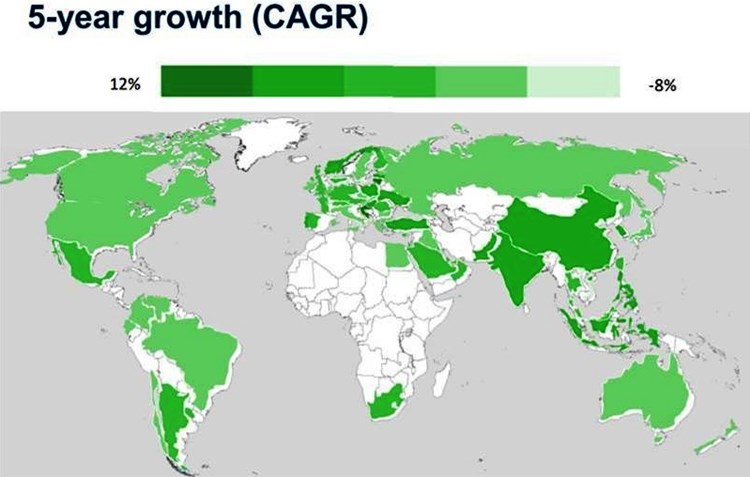Oxford Economics has released a report revealing data that suggests the world aerospace sector is – despite risks – set to rebound from a rough 2017 with renewed momentum.
Oxford Economics’ central forecast still anticipates greater momentum ahead for the sector worldwide, underpinned by order backlogs and the plans of both Boeing and Airbus to ramp up deliveries.
“Continued passenger growth, a boost in the momentum of world trade which is supporting air freight, historically low and stable jet fuel costs, low-cost airlines’ transatlantic plans and even Alitalia and Air Berlin’s recent troubles, all together provide support to airlines and hence their fleet plans,” the forecast finds.
In the short-term, ongoing turbulence in US aerospace production, compounded by a sharply weaker picture across important emerging markets Brazil and Russia, is driving the contraction in global output forecast for the sector this year, according to Oxford Economics.
In contrast, the UK continues to perform well. Long lead times and sterling’s sharp depreciation since 2016 have helped sustain momentum.
Oxford Economics sees the UK as the fastest growing aerospace market in the G7 this year.
Risks
Globally, while Oxford Economics continues to see robust momentum, it notes the risks to the sector are “skewed to the downside”. Terror threats in the developed world, escalating tensions between Trump and Jong-un, continued low and stable oil prices, and the ability of planes to fly efficiently longer distance, direct routes without stopovers/changes at their hubs, weigh on production prospects.


Global trends
The report notes: “Policy uncertainty triggered by the rise of populist, nationalist and anti-globalisation movements threatens airlines’ business plans, which were already being disrupted by terrorist attacks and rising geopolitical tensions. However, some of the key elections so far this year in Europe have diminished concerns that the era of dynamic globalisation, featuring increased inter-country movement of people and goods along supply chains, is coming to an end.
“These trends nevertheless continue to strengthen doubts over planned capacity increases, especially if it reduces growth potential across the Asian region (the expected source of most international passenger and freight growth for airlines) and through Middle Eastern hubs.
“Airlines’ new aircraft orders are in any case diminishing, since either deliveries are presently being postponed as capacity increases are scaled back (e.g. by IAG to the lower end of its previously announced band of 3-4% capacity growth) or fares are being cut to fill existing flights (e.g. by low-cost airlines, hitting revenues, if not overall profitability). Still, IATA’s data for the first half of 2017 was encouraging, with the industry experienced a 12- year high in traffic growth (7.9%) and a record first half load factor of 80.7%. Moreover, jet-fuel prices have fluctuated at, or even below, US$1.50/gallon so far this year.
“Finally, civilian aircraft order backlogs underpin a near-term growth rebound, providing supplier issues (which had constrained Airbus production in particular in 2016) continue to be addressed.”

